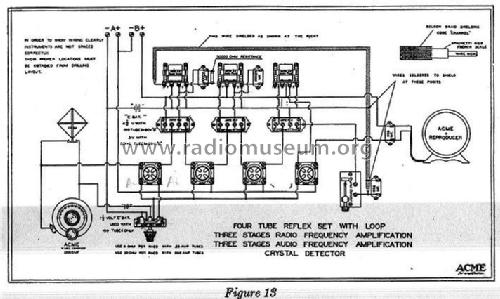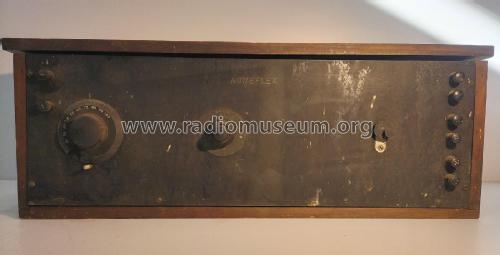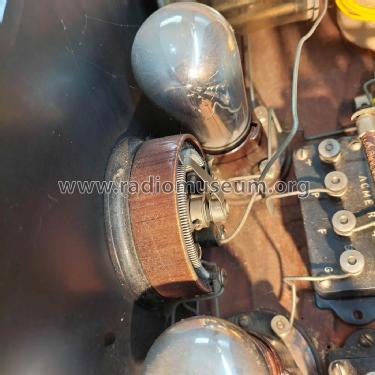Acmeflex Model A
Acme Apparatus Co.; Cambridge (MA)
- Pays
- Etats-Unis
- Fabricant / Marque
- Acme Apparatus Co.; Cambridge (MA)
- Année
- 1925 ?
- Catégorie
- Boîte de construction (composants et manuel) ou instructions
- Radiomuseum.org ID
- 336932
Cliquez sur la vignette du schéma pour le demander en tant que document gratuit.
- No. de tubes
- 4
- Principe général
- Principe spécial; 3 Etage(s) BF; Reflex
- Gammes d'ondes
- PO uniquement
- Tension / type courant
- Piles (rechargeables ou/et sèches) / 90; 6; 4.5 Volt
- Haut-parleur
- - Ce modèle nécessite des HP externes
- Matière
- Boitier en bois
- De Radiomuseum.org
- Modèle: Acmeflex Model A - Acme Apparatus Co.; Cambridge
- Forme
- Modèle de table boitier avec vouvercle
- Remarques
-
Radio is unique because of its reflex design, single tuned stage, and panel-mounted crystal detector. The radio must be connected to a loop antenna to complete the tuned circuit. Selectivity is poor, but would have been adequate in 1925. If a tuned loop is used, the radio can be tuned across most of the AM band with much better selectivity. Rheostat controls filaments of all 4 tubes. Potentiometer controls bias on first tube grid. Acme put the rheostat and pot in a concentric arrangement. The crystal detector has a coarse adjustment and a small vernier to help move the internal cat whisker. This detector works very well and once set it requires very little attention. It was in a cheaply made pine box with a plain bakelite front panel. It was intended to be low cost compared to other radios at that time, but still provides adequate sensitivity and enough power to clearly drive a horn or loudspeaker of that time.
Everything in the Kit except tubes, batteries and speaker.
- Schémathèque (1)
- -- Schematic
- Auteur
- Modèle crée par Tim McVey. Voir les propositions de modification pour les contributeurs supplémentaires.
- D'autres Modèles
-
Vous pourrez trouver sous ce lien 21 modèles d'appareils, 20 avec des images et 5 avec des schémas.
Tous les appareils de Acme Apparatus Co.; Cambridge (MA)
Collections
Le modèle Acmeflex fait partie des collections des membres suivants.





















